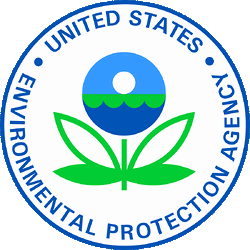 D.C. is buzzing about the newly announced EPA carbon emission rule. Bright and early Monday morning, EPA Administrator Gina McCarthy announced the draft rule, which affects carbon emissions from existing power plants. Over the next 120 days, EPA will be accepting comments on the proposal, which will be finalized in June of next year. The draft rule sets an emission rate standard for each state to meet by 2030, and states must submit implementation plans to EPA. AEE has long seen the much-anticipated EPA rule as an opportunity for the country to modernize the electric power system and, with the inclusion of advanced energy technologies among the options for states to use for compliance, an opportunity for the advanced energy industry.
D.C. is buzzing about the newly announced EPA carbon emission rule. Bright and early Monday morning, EPA Administrator Gina McCarthy announced the draft rule, which affects carbon emissions from existing power plants. Over the next 120 days, EPA will be accepting comments on the proposal, which will be finalized in June of next year. The draft rule sets an emission rate standard for each state to meet by 2030, and states must submit implementation plans to EPA. AEE has long seen the much-anticipated EPA rule as an opportunity for the country to modernize the electric power system and, with the inclusion of advanced energy technologies among the options for states to use for compliance, an opportunity for the advanced energy industry.
As promised in many public statements by Administrator McCarthy, the proposed rule is quite flexible, with most of the initiative left to the states rather than the federal government. The rule permits states to submit individual state or regional plans and allows states to utilize a range of emission reduction technologies to meet the set goal. EPA encourages, but does not prescribe, the use of several advanced energy technologies, such as renewable energy, end-use energy efficiency, demand response, energy storage, transmission efficiency, and switching plants to co-generation or natural gas—all of which were outlined in AEE’s report, Advanced Energy Technologies for Greenhouse Gas Reduction.
Reaction to the draft ran the gamut. In a statement from AEE, SVP Malcolm Woolf said, “By allowing a range of ‘outside the fence line’ options for compliance, EPA is giving states leeway to make full use of the dozens of advanced energy technologies that make it possible to cut emissions while improving reliability, reducing costs, increasing competition, and creating new services for consumers.”
Among business groups, the U.S. Chamber of Commerce denounced the rule even before it came out, but the Business Roundtable, a coalition of large corporation CEOs, praised it.
“As CEOs who lead major American companies…, we care deeply about both the health of the environment and the health of the economy,” said Dave Cote, Chairman and CEO of Honeywell and Vice Chair of the Roundtable, in a statement. “We look forward to working with the Administration on how best to achieve cost-effective greenhouse gas emissions reductions while continuing to support growth and job creation.”
The chair of the California Air Resources Board, Mary Nichols, noted that “the proposed rules bring some of the same economic and environmental benefits California has enjoyed from improved energy efficiency and cleaner low-carbon energy to the rest of the country.”
Among utilities, National Grid President Tom King had encouraging words to say about the rule. “I am strongly encouraged by EPA’s efforts to reduce CO2 emissions through sensible and practical regulation,” said King.
Unsurprisingly, some utility groups and coal-state members of Congress have come out against the rule. Senate Minority Leader Mitch McConnell (R-KY) commented that the rule would have a negative impact on jobs and introduced a bill to fight the rule. Prior to the draft rule’s release, McConnell tried to limit the rule using the Congressional Review Act, but the Government Accountability Office rejected his proposal.
The National Rural Electric Cooperative Association (NRECA), which represents cooperative utilities, expressed concern about the rule but noted that the state implementation would drive the economic effects. “America’s electric cooperatives are naturally concerned that these regulations will increase electricity prices and force power plant shutdowns, thereby harming the economy and jobs of hard-working Americans,” said NRECA CEO Joanne Emerson. “However, there are a lot of details to work through in this proposal and additional details that will be outlined in yet-to-be-developed state plans.”
Thus begins a process that will take years and play out at both the federal level and state-by-state. AEE and its State Coalition of state and regional partner organizations will be involved all the way.
Download below AEE’s new report on 40 diverse advanced energy technologies and services that reduce greenhouse gases while providing economic benefits.
Download the Report